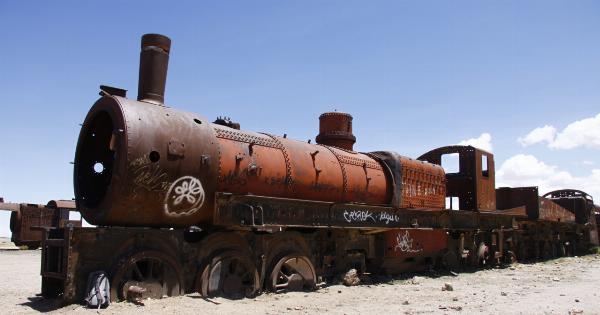Arterial blockages can pose significant challenges in the management of cardiovascular diseases.
Complex arterial blockages, characterized by severe calcification or heavy plaque burden, can be particularly difficult to treat using conventional treatment methods such as angioplasty and stenting. Intravascular atherectomy has emerged as an effective strategy for managing these complex blockages, offering a safer and more efficient alternative to traditional approaches.
This article aims to explore the strategies involved in managing complex arterial blockages with the use of intravascular atherectomy.
Understanding Intravascular Atherectomy
Intravascular atherectomy is a minimally invasive procedure that involves the removal of plaque or calcified deposits from the arterial walls.
This technique employs specialized devices that are inserted into the affected blood vessel to mechanically cut or ablate the plaque, restoring blood flow and improving the overall function of the artery. Various types of atherectomy devices are available, including rotational, orbital, and laser-based systems, each with its unique mechanism of action.
Identifying Complex Arterial Blockages
It is crucial to accurately identify complex arterial blockages before selecting the appropriate intervention strategy, such as intravascular atherectomy.
The use of advanced imaging modalities, such as intravascular ultrasound (IVUS) and optical coherence tomography (OCT), can provide detailed insights into the composition and severity of the blockage. These imaging techniques help determine factors such as the degree of calcification, the presence of thrombus, and the morphology of the lesion, all of which influence the choice of treatment.
Selection of Intravascular Atherectomy Devices
The selection of the most suitable intravascular atherectomy device depends on multiple factors, including the characteristics of the blockage, the size of the affected vessel, and the experience of the operator.
Rotational atherectomy devices, such as the Rotablator, utilize a high-speed rotating burr to abrade the plaque, enabling the removal of both soft and calcified lesions. This approach is particularly effective in heavily calcified lesions, as the burr can penetrate and modify the plaque’s composition.
Orbital atherectomy devices, such as the Diamondback 360, use a diamond-coated crown that orbits within the artery to sand the plaque, allowing for efficient plaque removal.
This technique is commonly employed for treating complex, non-calcified lesions. Laser atherectomy devices, such as the Turbo Elite, deliver laser energy to ablate the plaque, vaporizing it into small particles that can be easily removed.
These devices are useful for managing lesions with varying compositions, including calcified and fibrotic plaques.
Guidewire and Catheter Techniques
Successful navigation of complex arterial blockages requires the application of appropriate guidewire and catheter techniques. The choice of guidewire is critical, as it determines the ability to cross the lesion and reach the distal segment safely.
Hydrophilic or polymer-covered wires are often preferred for their enhanced trackability and pushability. For heavily calcified lesions, the use of a coronary atherectomy-specific guidewire, such as the Pilot 200, can aid in crossing the plaque.
Additionally, the selection of appropriate catheter techniques is crucial for successful atherectomy.
Techniques such as the step-by-step sequential technique, wherein the operator incrementally advances the atherectomy device within the lesion, can help prevent complications. The “mother-and-child” technique involves using a smaller-sized balloon catheter as a receiver catheter, facilitating the retrieval of dislodged plaque particles during the atherectomy procedure.
Optimizing Procedural Outcomes
To optimize the outcomes of complex arterial blockage management with intravascular atherectomy, attention must be given to factors such as lesion preparation, rotational speed, and sizing.
Lesion preparation involves the use of predilation techniques, including balloon angioplasty, scoring balloons, or cutting balloons, to facilitate easier engagement of the atherectomy device and enhance its efficacy. Subsequently, determining the appropriate rotational speed based on the characteristics of the plaque and the vessel size is critical for achieving optimal results without causing vascular injury.
Sizing of the atherectomy device should be carefully considered to ensure accurate plaque removal without excessive vessel damage.
Selection of the correct burr size or crown size, based on pre-procedural imaging, can help minimize complications such as vessel perforation and dissection. Additionally, the use of adjunctive tools, such as a distal embolic protection device, can reduce the risk of distal embolization of debris during the atherectomy procedure.
Complications and Safety Measures
Despite its efficacy, intravascular atherectomy carries potential risks and complications that need to be addressed during the procedure.
The risk of distal embolization, no-reflow phenomenon, vessel dissection, and perforation exists and requires proper management. Intravascular imaging techniques such as angiography, IVUS, or OCT can aid in detecting and minimizing these complications.
Use of anticoagulation and antiplatelet therapies should be tailored to minimize thrombotic events related to the procedure.
Close monitoring of the patient’s hemodynamic status and electrocardiographic changes during the procedure is essential to promptly identify and manage any adverse events. In case of complications such as vessel perforation, prompt recognition and access to additional devices, such as covered stents or embolization plugs, can help mitigate the risks and improve patient outcomes.
Conclusion
Intravascular atherectomy presents a valuable strategy for managing complex arterial blockages, offering an effective alternative to conventional treatment methods.
Successful treatment of these challenging lesions relies on a comprehensive understanding of the patient’s specific condition, appropriate selection of atherectomy devices, and meticulous procedural execution. With careful patient selection, adherence to best practices, and continuous innovation in device technology, intravascular atherectomy holds great promise for improving outcomes in the management of complex arterial blockages.






























